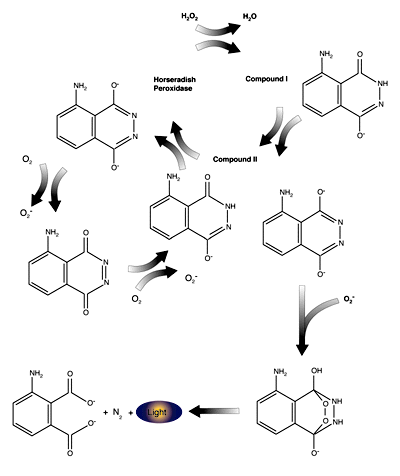Oxygen Assay Articles
Hydrogen Peroxide Detection: The Methods
In at least one important way, measuring hydrogen peroxide is substantially easier than measuring superoxide. Superoxide is unstable in aqueous solution—its steady state concentration cannot be measured directly. As a result, superoxide “levels” must be determined indirectly. This can be done by either (a) measuring rates of production and removal and then correlating the two,…
Read MoreHydrogen Peroxide Detection: An Overview
Hydrogen peroxide, like superoxide, can react with a variety of targets in the cell, and has been associated with a number of diseases. Aerobic organisms express catalase and peroxidase enzymes to prevent damage by H2O2. Peroxidases—most of which contain a heme at their active site—undergo an enzymatic cycle in which a molecule of peroxide oxidizes…
Read MoreSuperoxide Detection
Overview Superoxide has been implicated in diseases ranging from Alzheimer’s to diabetes. The wide range of pathologies associated with superoxide is the result of its ability to react with a variety of cellular targets, including enzyme active sites, nucleic acids and lipids. Cells protect themselves against superoxide damage by producing superoxide dismutase enzymes (SODs). These…
Read MoreReactive Oxygen Species
Oxygen is used by a great variety of organisms as a means for producing energy. The redox potential of the oxygen-water couple is 1.229 Volts, meaning that a relatively large amount of energy is released during the 4 electron reduction which converts O2 to H2O. The incorporation of this reaction into cellular metabolism was an enabling…
Read MoreImmunostaining with Horseradish Peroxidase
Chromogenic and luminometric substances are also available for horseradish peroxidase (HRP). The “classic” chromogen used with HRP is diaminobenzidine (DAB). In the presence of H2O2, HRP will oxidize DAB, creating a water insoluble brown precipitate. DAB has two primary disadvantages, it is relatively insensitive and it is a potential carcinogen which must be decontaminated before…
Read More
